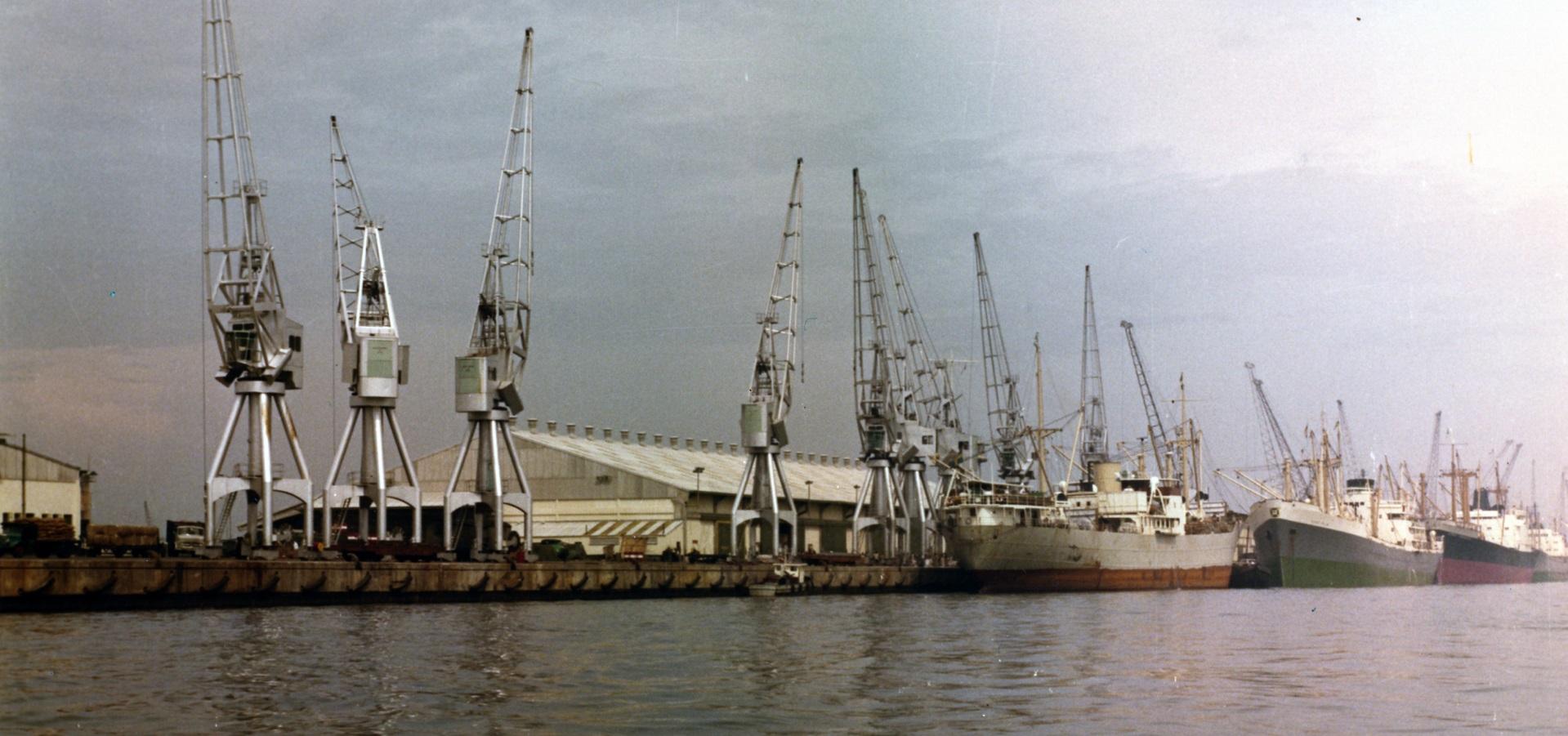Apapa Port

The project consists of an extension and other improvements to the port of Apapa (or Port of Lagos, Nigeria) to increase the annual traffic of goods from 15 million tons to 23 million tons.
The extension was partially funded by the World Bank in 1962. It included the addition of moorings (943 m) that were added to the existing ones used for high-sea ships, increasing the length of the main quay (that at the time was 1494 m long), and the construction of ancillary works and equipment, four transit sheds, two warehouses and the completion of other two being built, depots and cranes.
A stone pit was installed 100 km from Apapa to adequately satisfy the need of rockfill and crushed stone, which amounted totally to some 280,000 m3. The materials were then transported where they were going to be used with special trains equipped with specifically-made wagons, which passed on a daily basis. One of the key operations of the worksite was the unloading and distribution of the inert materials to the various processing sectors, among which the concrete mixing one.
The plants produced some 130,000 m3 of concrete, of which 70,000 m3 to prefabricate the blocks making up the quay wall, with an average daily production of 37 blocks weighing some 20 tons.
The project had an overall positive impact in economic terms and with regard to the national development plan.Today, Lagos is one of the main ports of Western Africa, with a total area of 120 hectares.
Client: Nigerian Ports Authority, Lagos
Main Technical Data:
Concrete: 130,000 m3
Quay wall height: 11.80 m